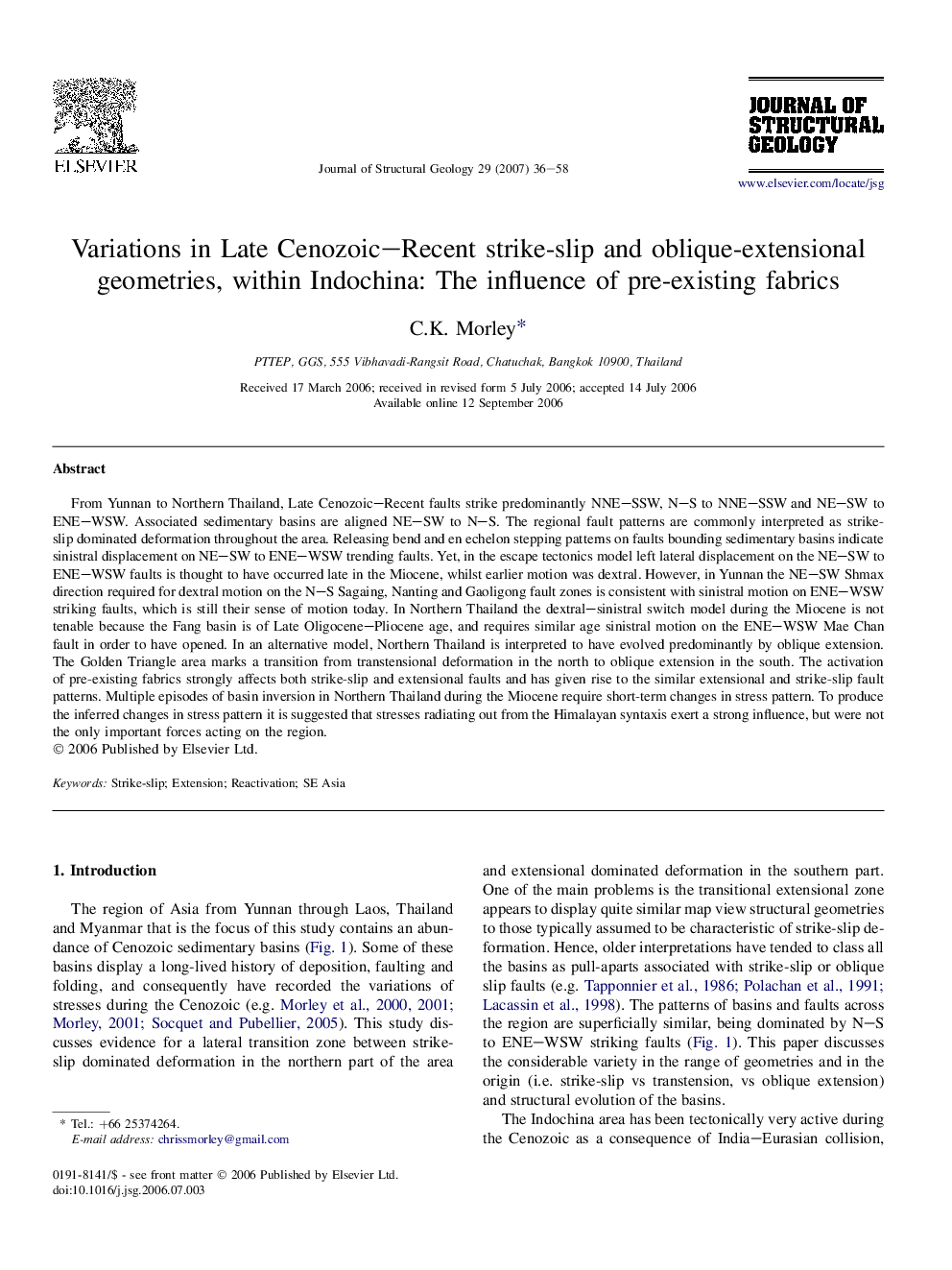| کد مقاله | کد نشریه | سال انتشار | مقاله انگلیسی | نسخه تمام متن |
|---|---|---|---|---|
| 4734419 | 1357116 | 2007 | 23 صفحه PDF | دانلود رایگان |

From Yunnan to Northern Thailand, Late Cenozoic–Recent faults strike predominantly NNE–SSW, N–S to NNE–SSW and NE–SW to ENE–WSW. Associated sedimentary basins are aligned NE–SW to N–S. The regional fault patterns are commonly interpreted as strike-slip dominated deformation throughout the area. Releasing bend and en echelon stepping patterns on faults bounding sedimentary basins indicate sinistral displacement on NE–SW to ENE–WSW trending faults. Yet, in the escape tectonics model left lateral displacement on the NE–SW to ENE–WSW faults is thought to have occurred late in the Miocene, whilst earlier motion was dextral. However, in Yunnan the NE–SW Shmax direction required for dextral motion on the N–S Sagaing, Nanting and Gaoligong fault zones is consistent with sinistral motion on ENE–WSW striking faults, which is still their sense of motion today. In Northern Thailand the dextral–sinistral switch model during the Miocene is not tenable because the Fang basin is of Late Oligocene–Pliocene age, and requires similar age sinistral motion on the ENE–WSW Mae Chan fault in order to have opened. In an alternative model, Northern Thailand is interpreted to have evolved predominantly by oblique extension. The Golden Triangle area marks a transition from transtensional deformation in the north to oblique extension in the south. The activation of pre-existing fabrics strongly affects both strike-slip and extensional faults and has given rise to the similar extensional and strike-slip fault patterns. Multiple episodes of basin inversion in Northern Thailand during the Miocene require short-term changes in stress pattern. To produce the inferred changes in stress pattern it is suggested that stresses radiating out from the Himalayan syntaxis exert a strong influence, but were not the only important forces acting on the region.
Journal: Journal of Structural Geology - Volume 29, Issue 1, January 2007, Pages 36–58